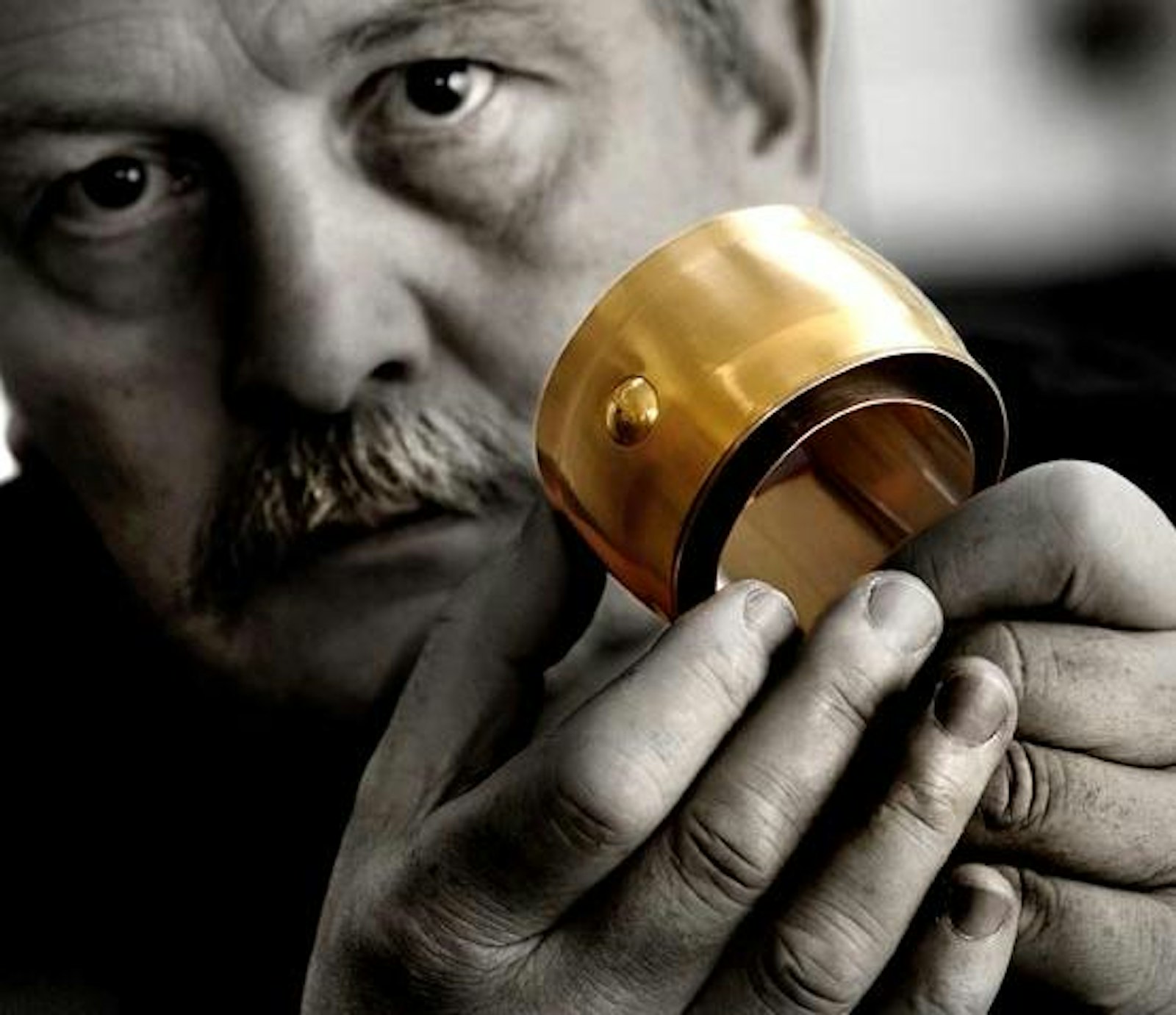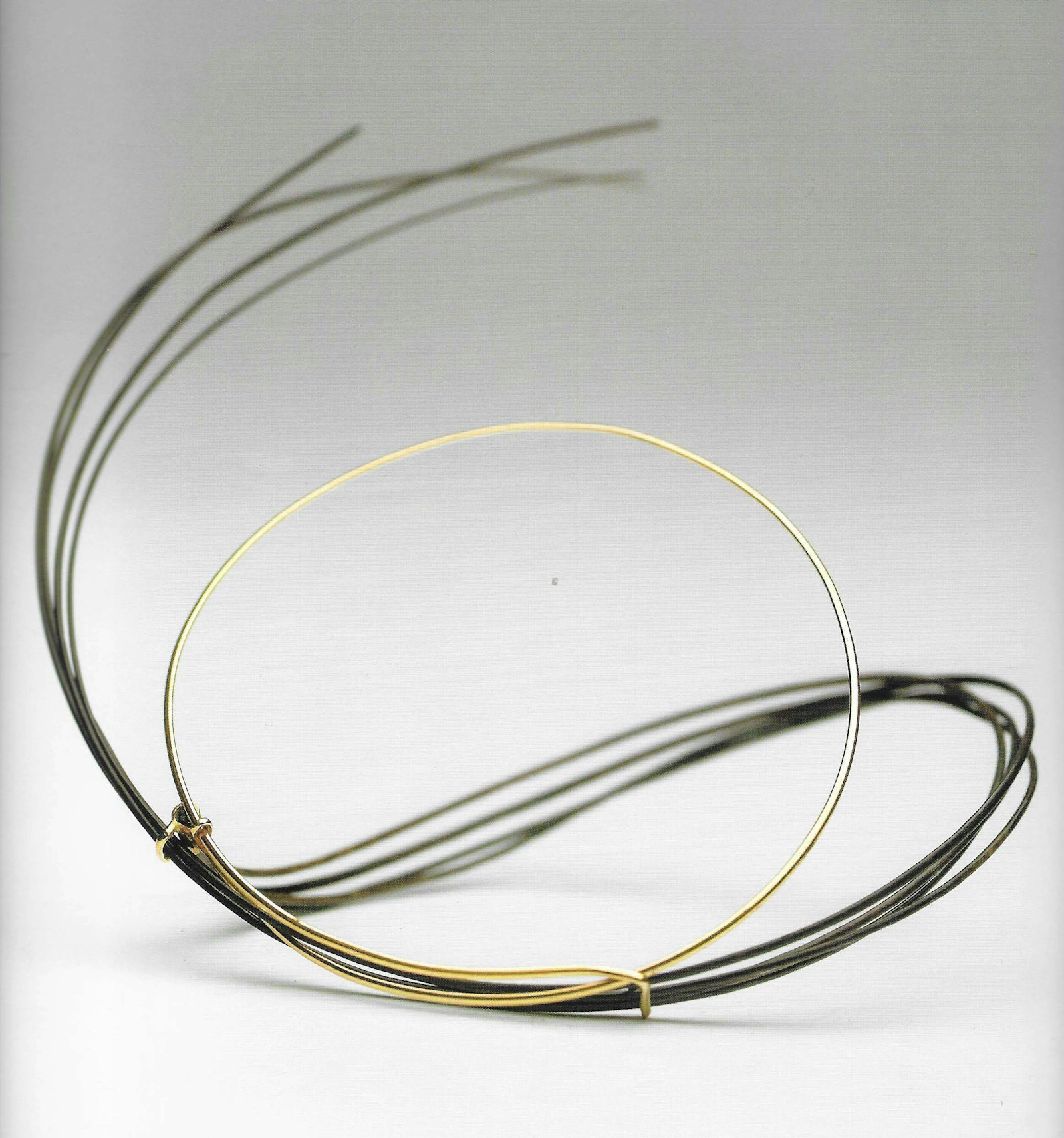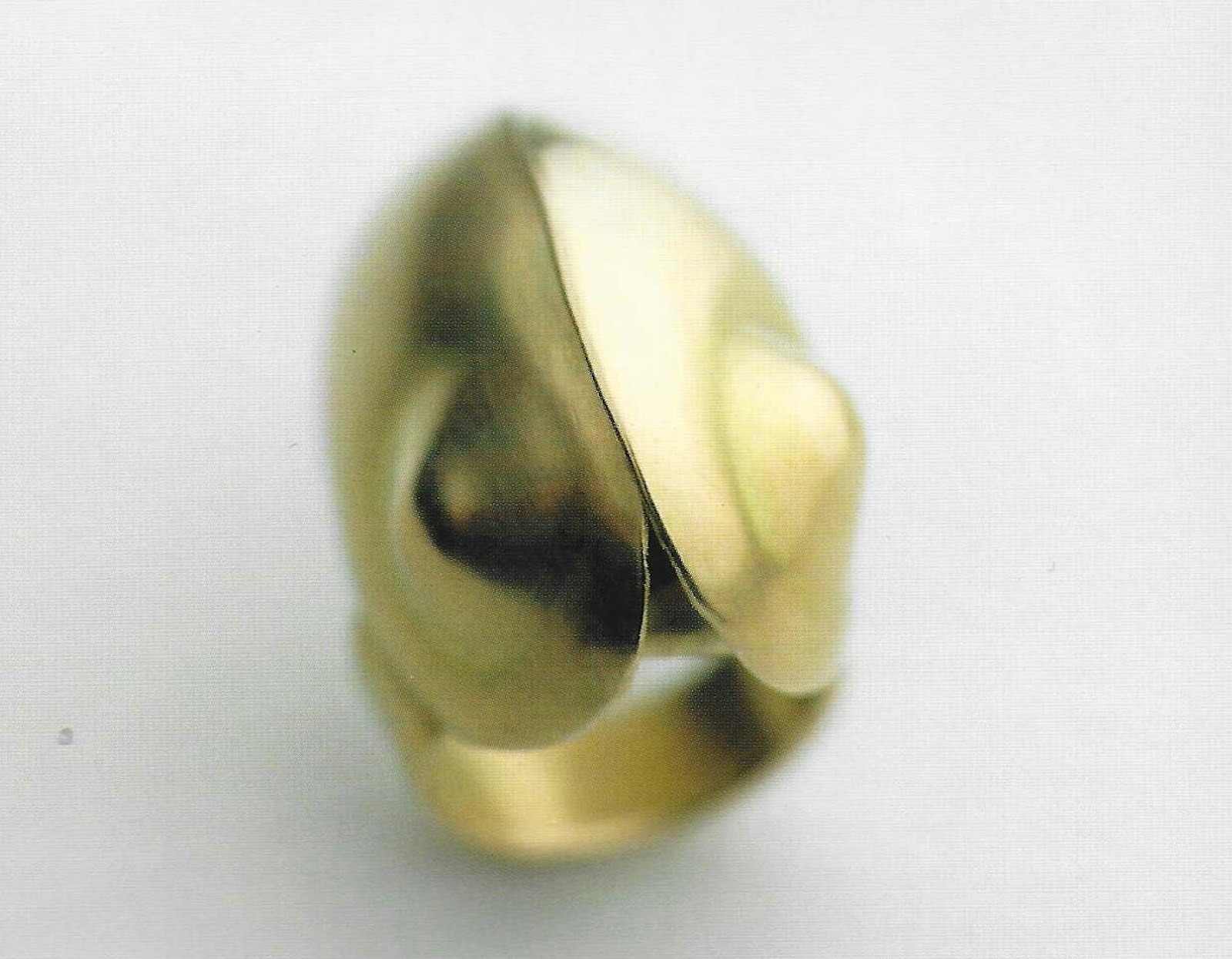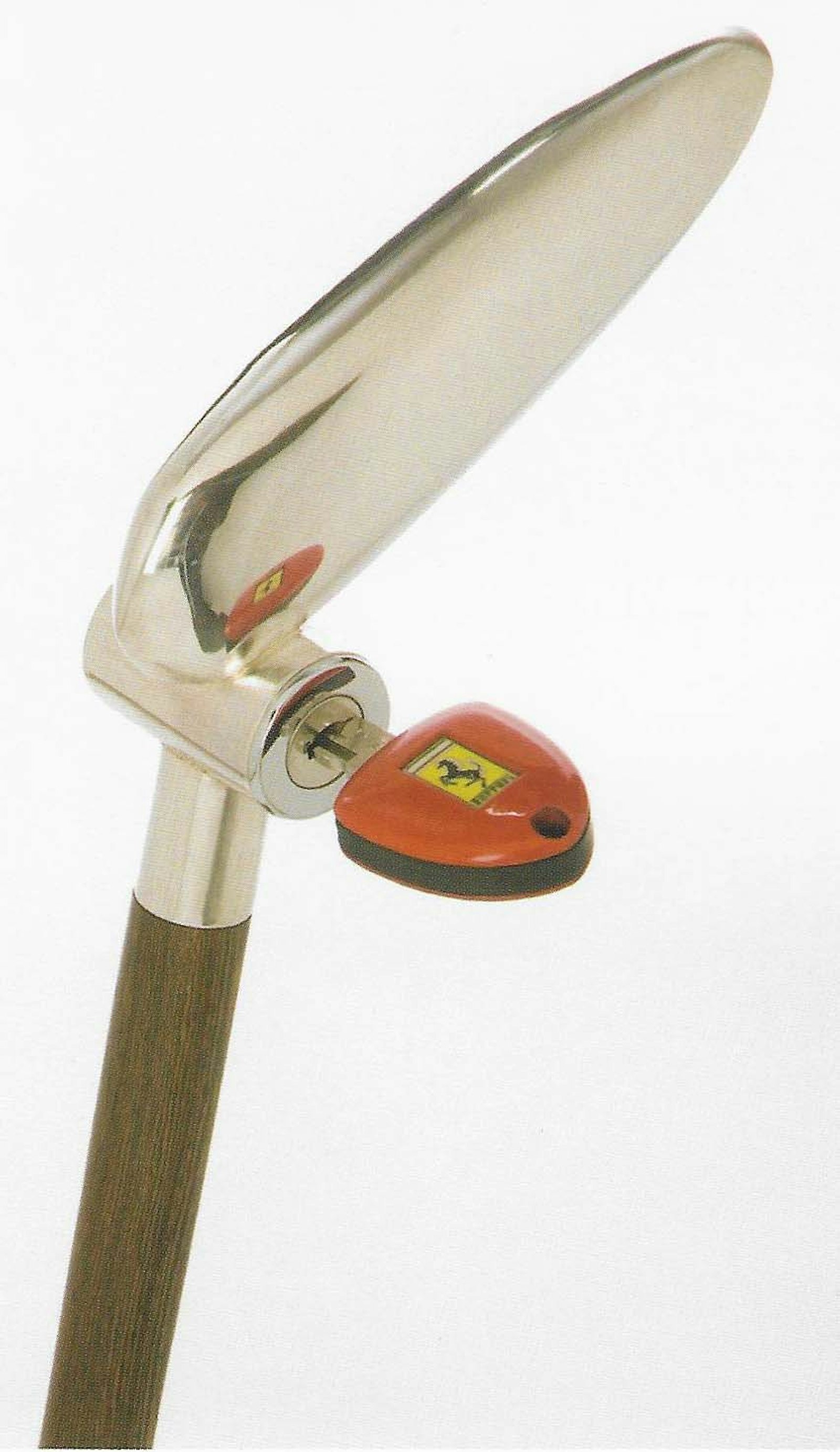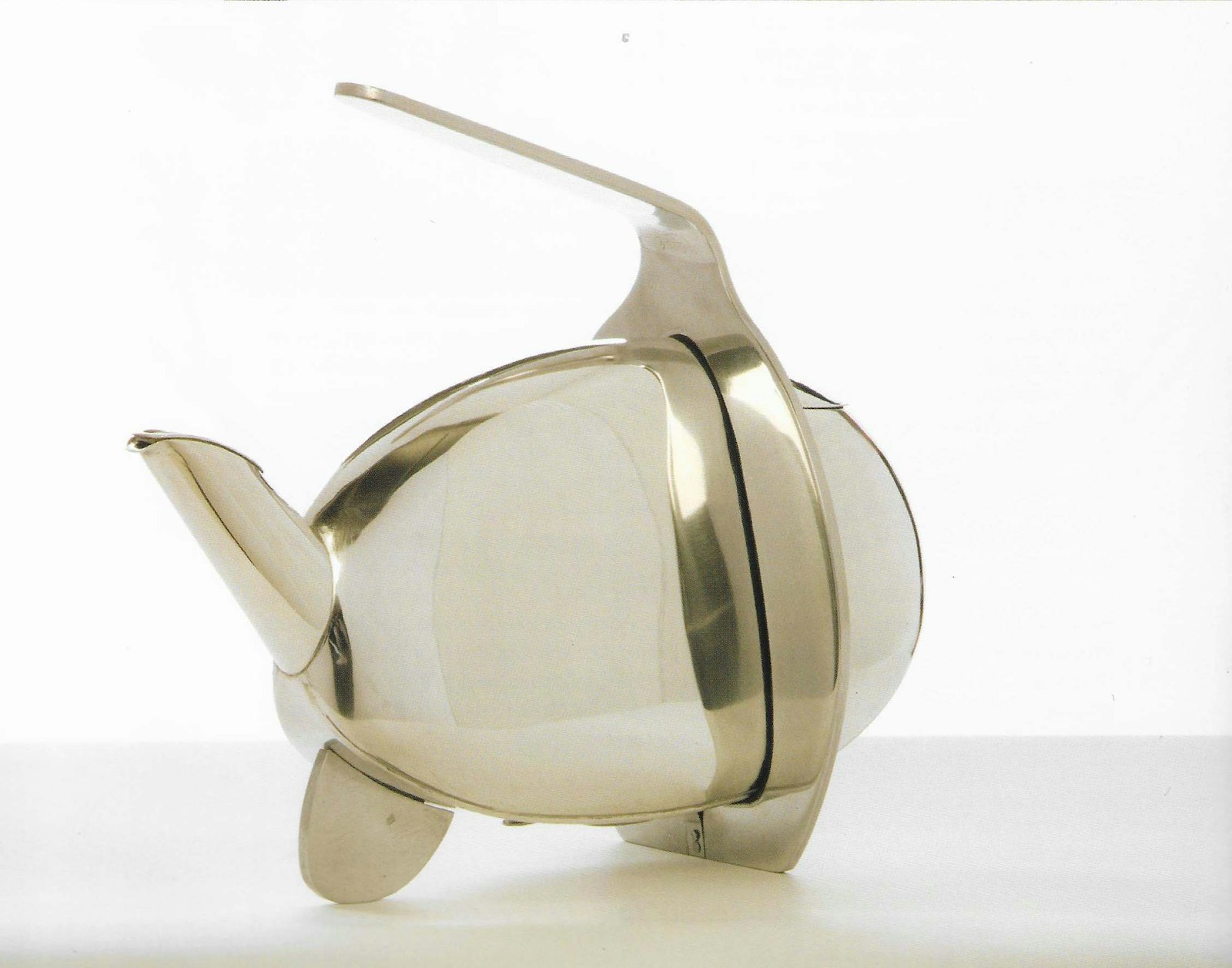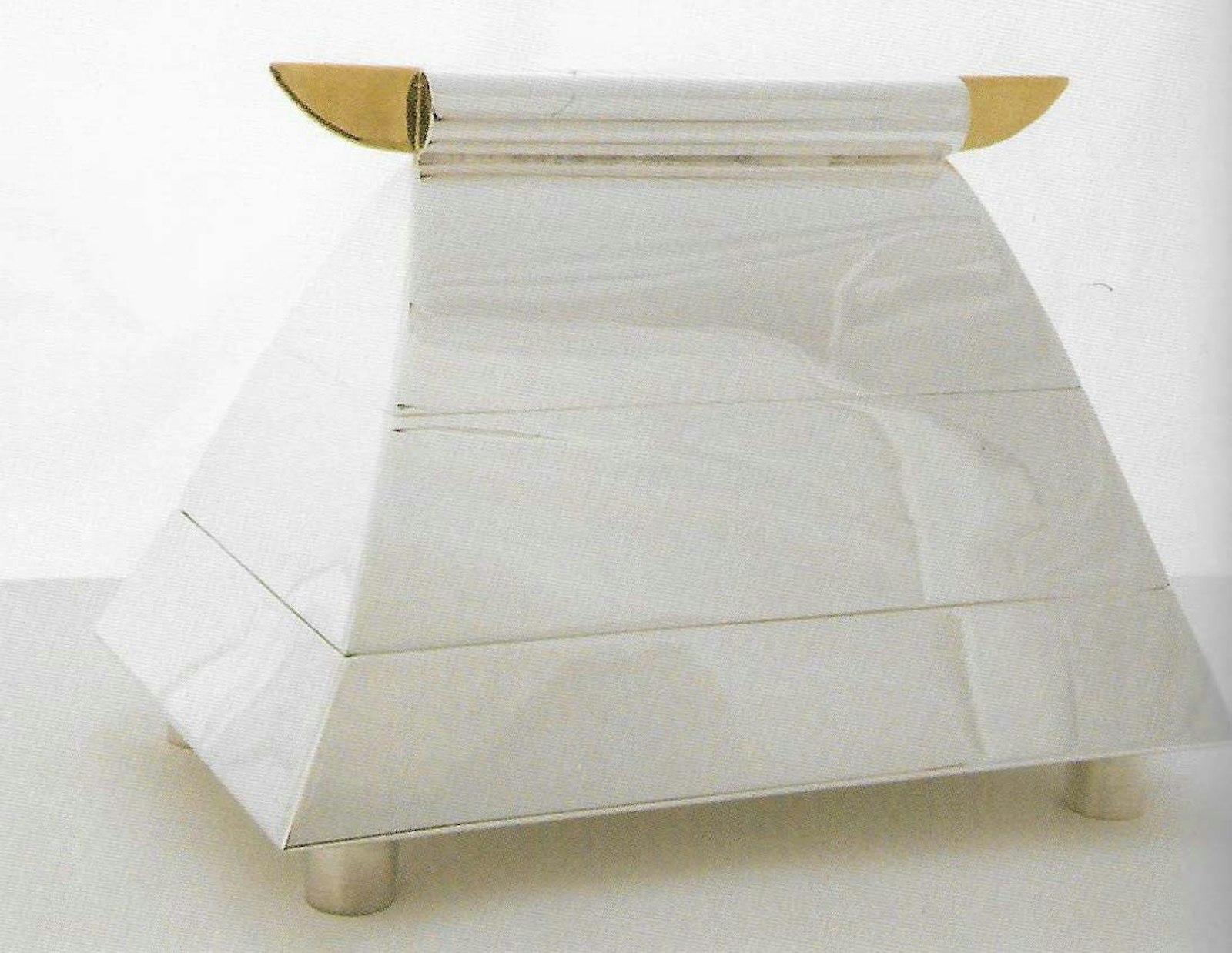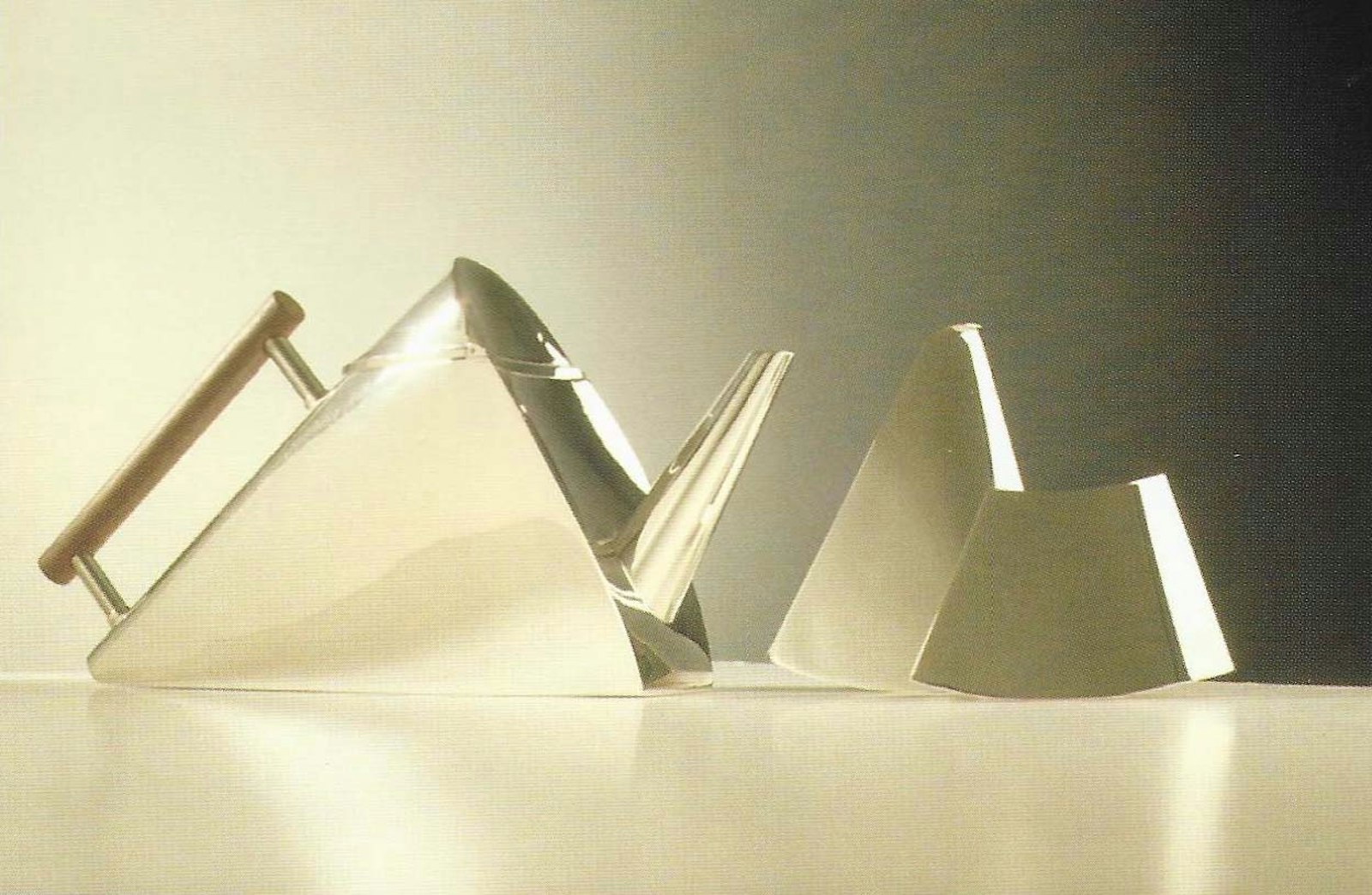de Velde
Siegfried De Buck
Siegfried de Buck began his career in 1972 as a goldsmith and jewelry designer. He develops contemporary jewelry and pieces of silverware.
It is quite some time since I have published an article about the life and work of my old friend Siegfried De Buck. His career as a goldsmith and jewellery designer took off a couple of years before I started my career as a promoter of contemporary applied art and design. He started in 1972, and I in 1975.
We soon became acquainted and grew up together in the world of applied art. Those were fascinating times. There were many changes underway in the domains of applied arts because some designers wanted to liberate their art and join the plastic arts. They felt that plastic arts lay closer to their craft than design. In those days, all the applied arts disciplines were laboratories for all kinds of experiments and especially jewellery design. The most progressive currents in that domain from the mids-1960s onwards came from Holland, the United Kingdom and Germany. In Belgium, jewellery remained a rather conservative and middle class domain, but by the end of the seventies and the beginning of the eighties, that mould was broken. Siegfried was one of the first to lead the way. After his training as a goldsmith at IATA in Namur (successor of the Maredsous School), he set up his own studio, based on the contemporary vision he had developed during his training. It was a choice that would determine the course of his career and to which he still remains faithful today. His career is long from being over and he is now honoured with the Henry van de Velde Award for Lifetime Achievement Award. Siegfried De Buck was the first silversmith to design the trophy for this Award, which also had repercussions for his career.
At the beginning of the eighties we met regularly and had many discussions about the function of a contemporary piece of jewellery, which materials were most suitable, which techniques were interesting, whether or not it was art, whether an enlarged piece of jewellery could be considered sculpture or not, and much more. We travelled to the Schmuckmuseum in Pforzheim (Germany), which at the time was the 'place to be' for contemporary metalwork, in order to introduce his work to Dr Fritz Falk, the former director. We travlled to London to visit the exhibition Jewellery Redefined, which showed the most crazy, ingenious and avant-garde pieces of jewellery. At that time, designers from other disciplines like textiles, ceramics and even art historians, were becoming involved in making jewellery. Their work opened up new perspectives for goldsmiths, who were still largely bound by tradition. In Brussels, Bernard Francois, the then pioneer of a completely new style of jewellery, was very active, supported by Emile Souply. Bernard's Galerie Néon was known internationally. Siegfried took a pioneering role in Flanders when he started to teach jewellery workshops at the St. Lucas Pavilion, the artistic branch of what is now the Karel de Grote-Hogeschool in Antwerp, although he only taught part-time because he wanted to retain his freedom to work in his own studio. He also preferred evolution to revolution, continuous growth, without preaching from the barricades. He continued working in his own style and, to quote him: "As a designer, I functioned more as a catalyst, fusing all exterior influences into one new form." This turned out to be a very constructive way to introduce the avant-garde ideas of London, Amsterdam and Munich to his students in Antwerp.
At the beginning of the eighties we met regularly and had many discussions about the function of a contemporary piece of jewellery, which materials were most suitable, which techniques were interesting, whether or not it was art, whether an enlarged piece of jewellery could be considered sculpture or not, and much more. We travelled to the Schmuckmuseum in Pforzheim (Germany), which at the time was the 'place to be' for contemporary metalwork, in order to introduce his work to Dr Fritz Falk, the former director. We travlled to London to visit the exhibition Jewellery Redefined, which showed the most crazy, ingenious and avant-garde pieces of jewellery. At that time, designers from other disciplines like textiles, ceramics and even art historians, were becoming involved in making jewellery. Their work opened up new perspectives for goldsmiths, who were still largely bound by tradition. In Brussels, Bernard Francois, the then pioneer of a completely new style of jewellery, was very active, supported by Emile Souply. Bernard's Galerie Néon was known internationally. Siegfried took a pioneering role in Flanders when he started to teach jewellery workshops at the St. Lucas Pavilion, the artistic branch of what is now the Karel de Grote-Hogeschool in Antwerp, although he only taught part-time because he wanted to retain his freedom to work in his own studio. He also preferred evolution to revolution, continuous growth, without preaching from the barricades. He continued working in his own style and, to quote him: "As a designer, I functioned more as a catalyst, fusing all exterior influences into one new form." This turned out to be a very constructive way to introduce the avant-garde ideas of London, Amsterdam and Munich to his students in Antwerp.
At the same time, an interesting but rather introverted course with a more sculptural orientation existed at the Royal Academy for Fine Arts in Antwerp. Several graduates of the Royal Academy went on to teach at the former St. Lucas Pavilion. The impact of Siegfried's teaching meant that his students integrated rapidly into the international jewellery scene after graduating. The high point of his career in this period was his jewellery pavilion for the Lineart Art Fair in 1983. This pavilion was an enlargement of one of his most famous pieces: 'Circle, triangle', a golden triangle that cuts through a black rubber circle. He enlarged this piece of jewellery to research its sculptural value. 1983 was a very productive year for Siegfried De Buck. Contacts were made abroad, he devoured literature, he was brimming with ideas and tried one experiment after the other. This resulted in jewellery made out of plexiglass, elephant hair, wood and steel, but alwasy in combination with precious metals and especially gold.
We now take a small leap in time and arrive in the year 1990: the Courtrai Biennale 'Interieur' where I organise TReASHure isLand, a rubbish container transformer into a treasure vault (hence the misleading English title). Along with a dozen other designers, Siegfried accepted to create a 'treasure'. For the first time in twenty years he created a silver coffee service. The result was stunning and paradoxically it attracted the full attention of Alberto Alessi, the guest of honour that year, because with this work Siegfried wanted to protest against the 'intellectual sell out' of the silversmith craft bu Alessi to architects and industrial designers. He did not agree with the fact that the professionals, the goldsmiths, should only be allowed to produce. His answer was a series of silver objects he designed and produced until the late nineties, earning him considerable fame. In 1993 Siegfried led a workshop during an exhibition of international silverware A Sparkling Party, organised by myself in the framework of Antwerp Cultural Capital of Europe. As well as Siegfried, many top designers and managers of important design companies participated in this workshop including Alberto Alessi, Alessandro Mendini, Gabriele de Vecchi, Friedrich Becker and Jean Lemmens. The exhibition gave new impetus to the as good as dead creative and contemporary art of silversmithing in our country. This made it possible for the Province of East Flanders to present Prince Filip and Princess Mathilde with a silver chocolate jug, forged by De Buck, on their official visit to Ghent. Siegfried did not stop making jewellery, producing during the same period the series Spina, with which he demonstrated the corporeal and feminine features of his designs. At that time, I also invited Siegfried to design the trophy for our first Henry van de Velde Awards. He designed a rod of silver and precious wood to hold the Award certificate. The production of this trophy led him to develop his series of Walking Canes, first exhibited in Amsterdam in 1996.
An enduring love for technique is the common thread running throughout his oeuvre. Technique as a concept carries his artistic ideas, his vision. Siegfried De Buck loves well-finished and refined mechanisms, beautiful in form and contour. Motorcycles and fast cars are reflected in his jewellery, which are in turn associated with the perfect female body. Beauty is expressed in a sensual manner.
At the end of the nineties, he designed Table for two in collaboration with Katrien Van Hulle, produced by Colect. Katrien recently had a copy of that same table gilded and put on display during Interieur 2008.
In the last 35 years, Siegfried has filled an incredibly rich curriculum vitae, out of which we want to highlight a few recent achievements. These include the Sterckshof commission in 2003 and his monograph published by Stichting Kunstboek and Design Flanders. There was the week long Jewellery design Master class held at the Royal College of Art in London, of which he is very proud with good reason.
Collection wise, several pieces are in important museums such as the PMMK (Ostend), the Museum Boijmans Van Beuningen (Rotterdam), the Victoria and Albert Museum (London), the Royal College of Art (London), the Schmuckmuseum (Pforzheim), the Design museum (Ghent) and the Zilvermuseum Sterckshof (Antwerp).

